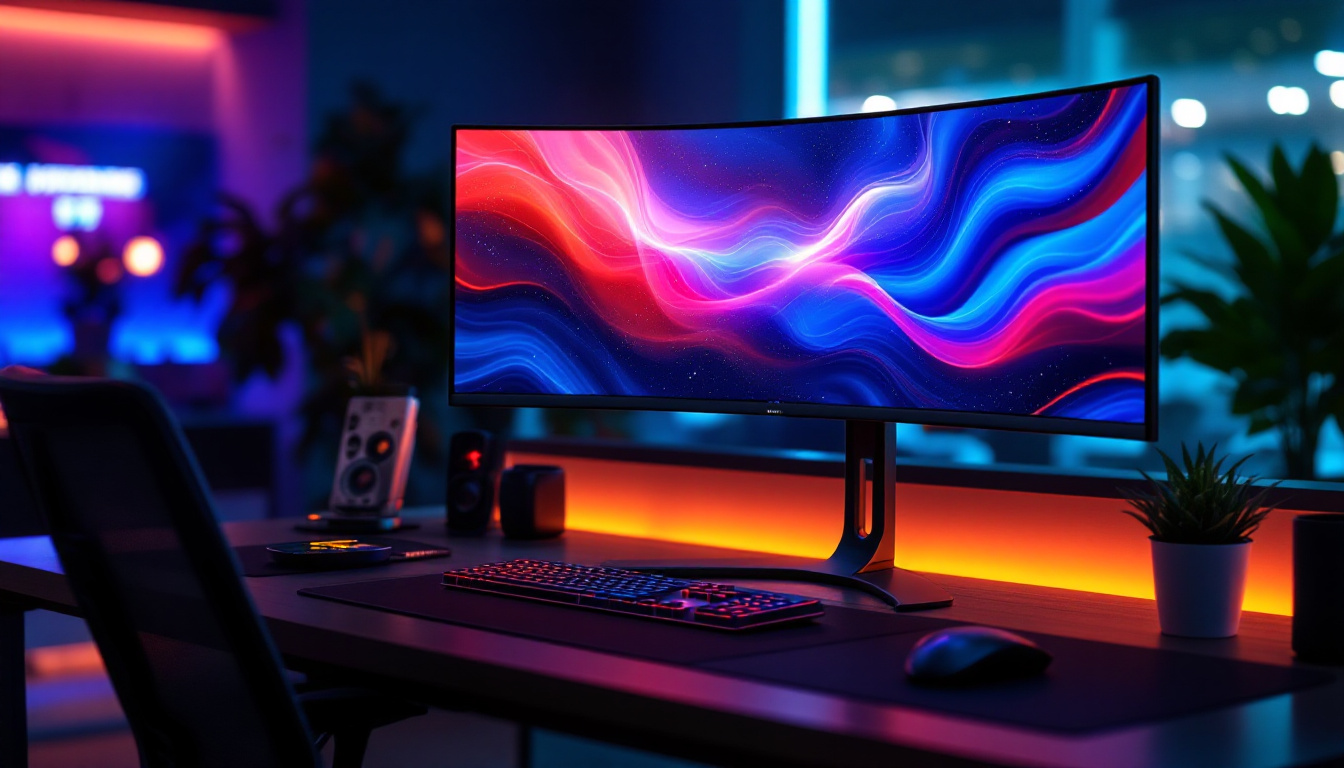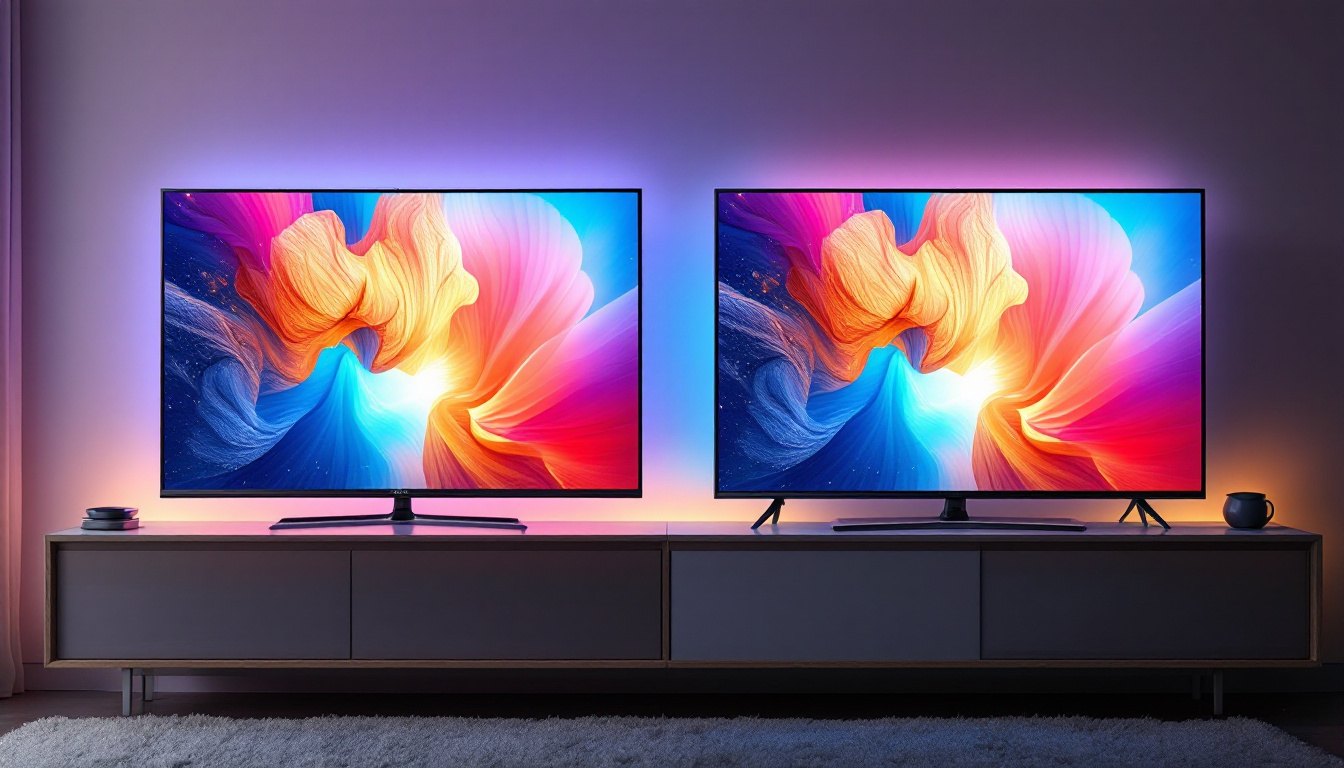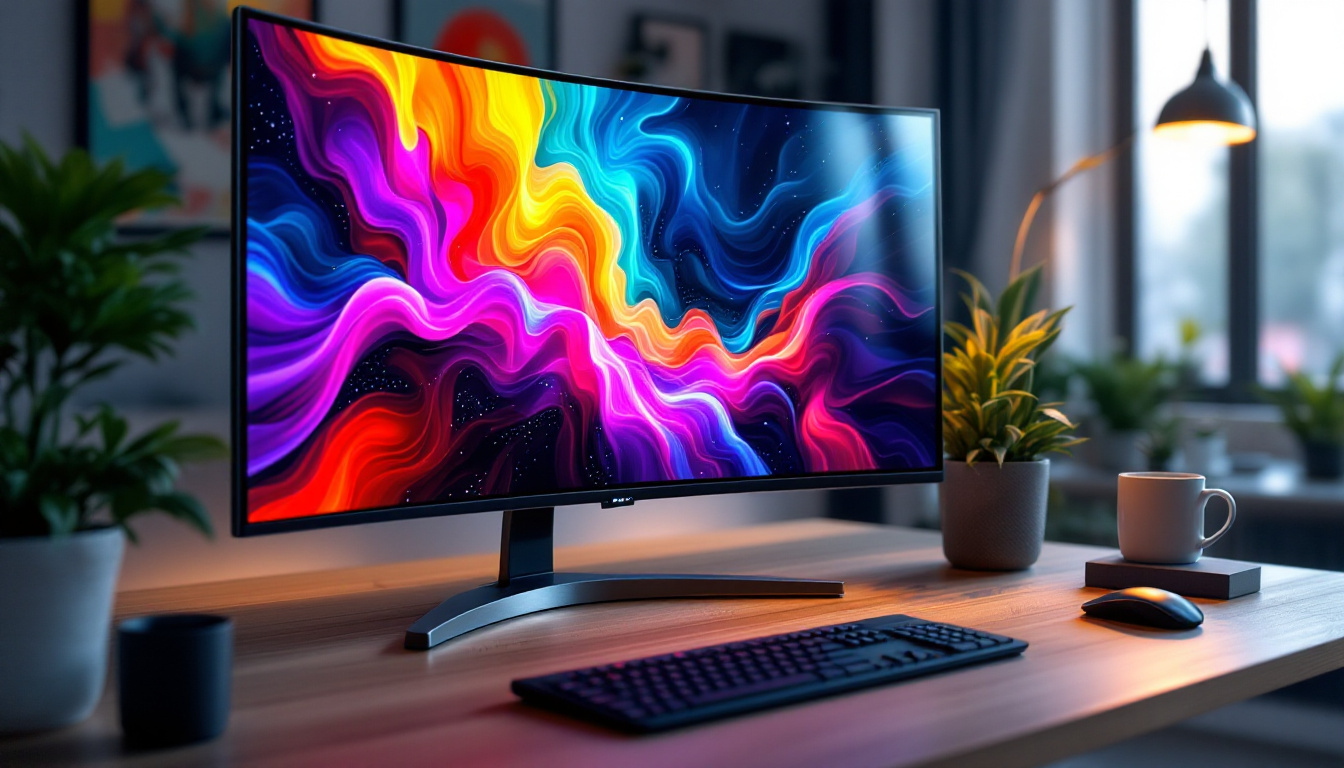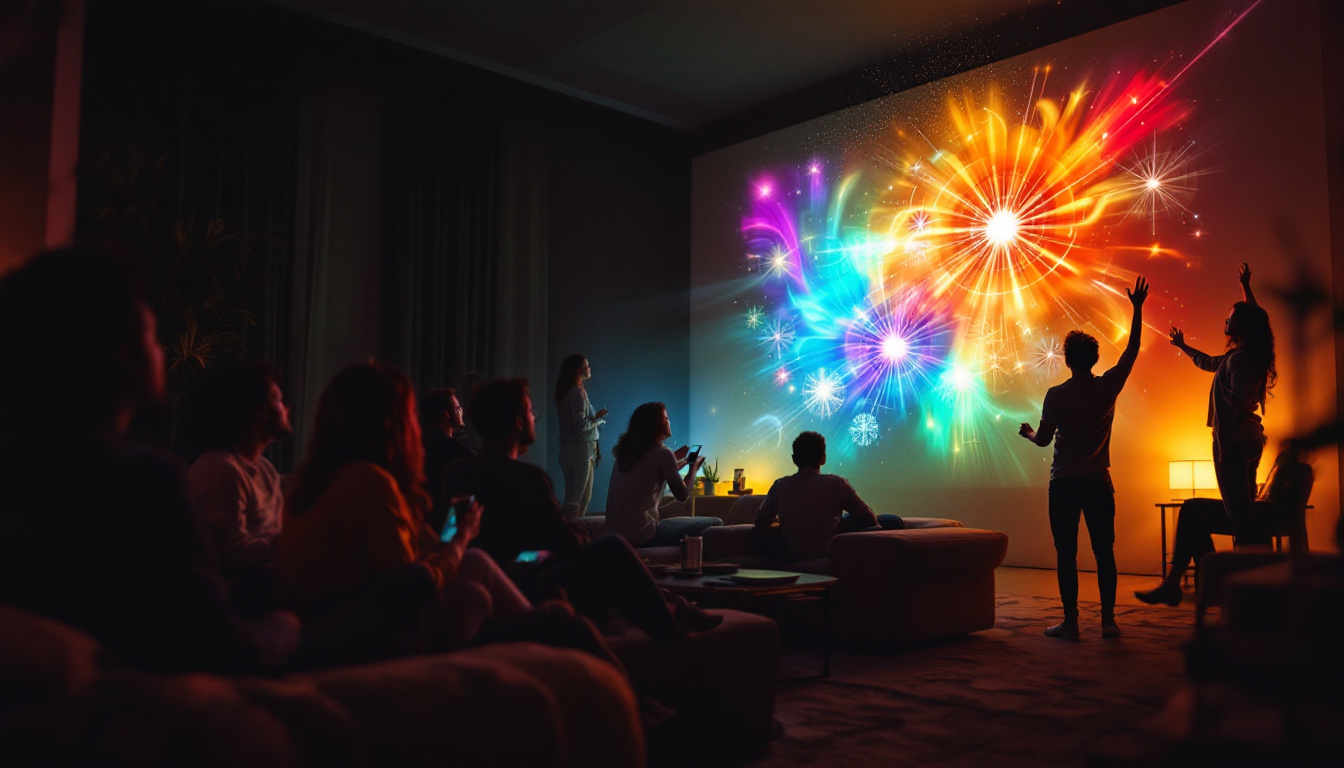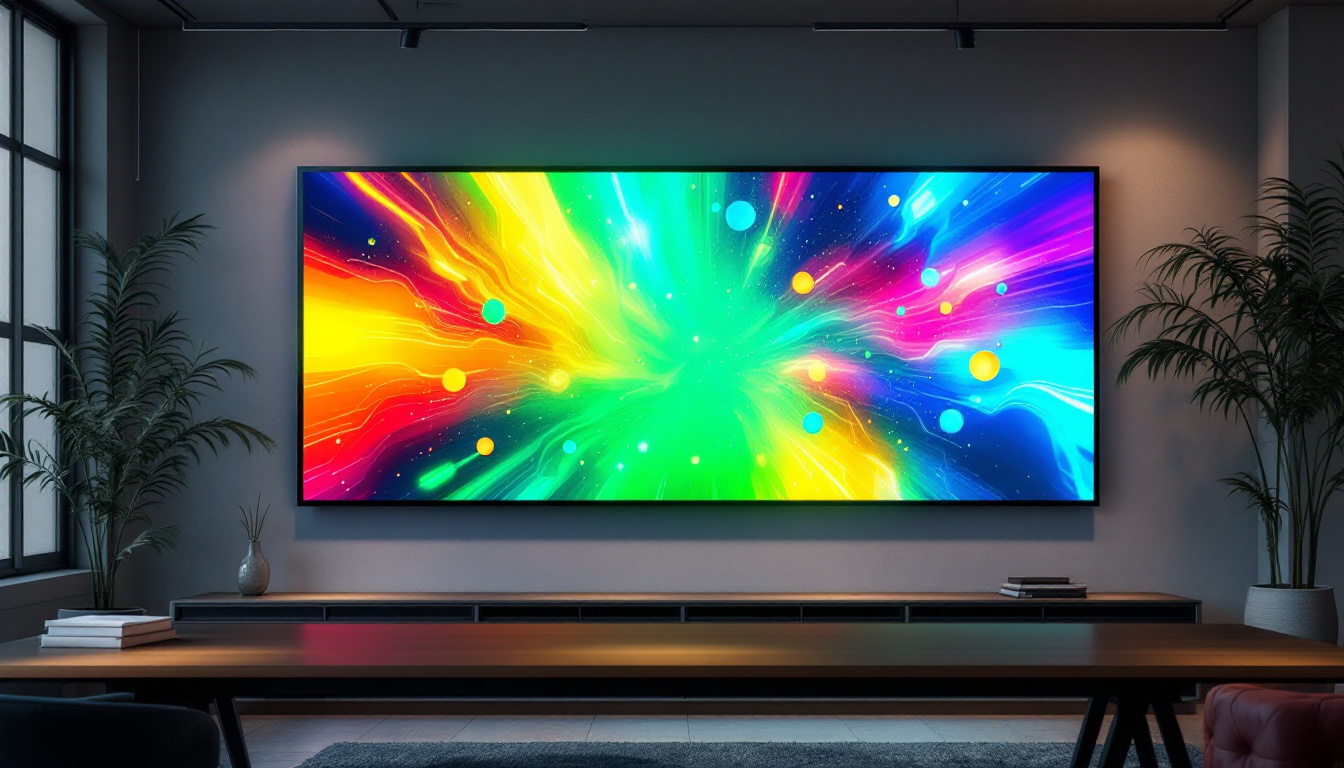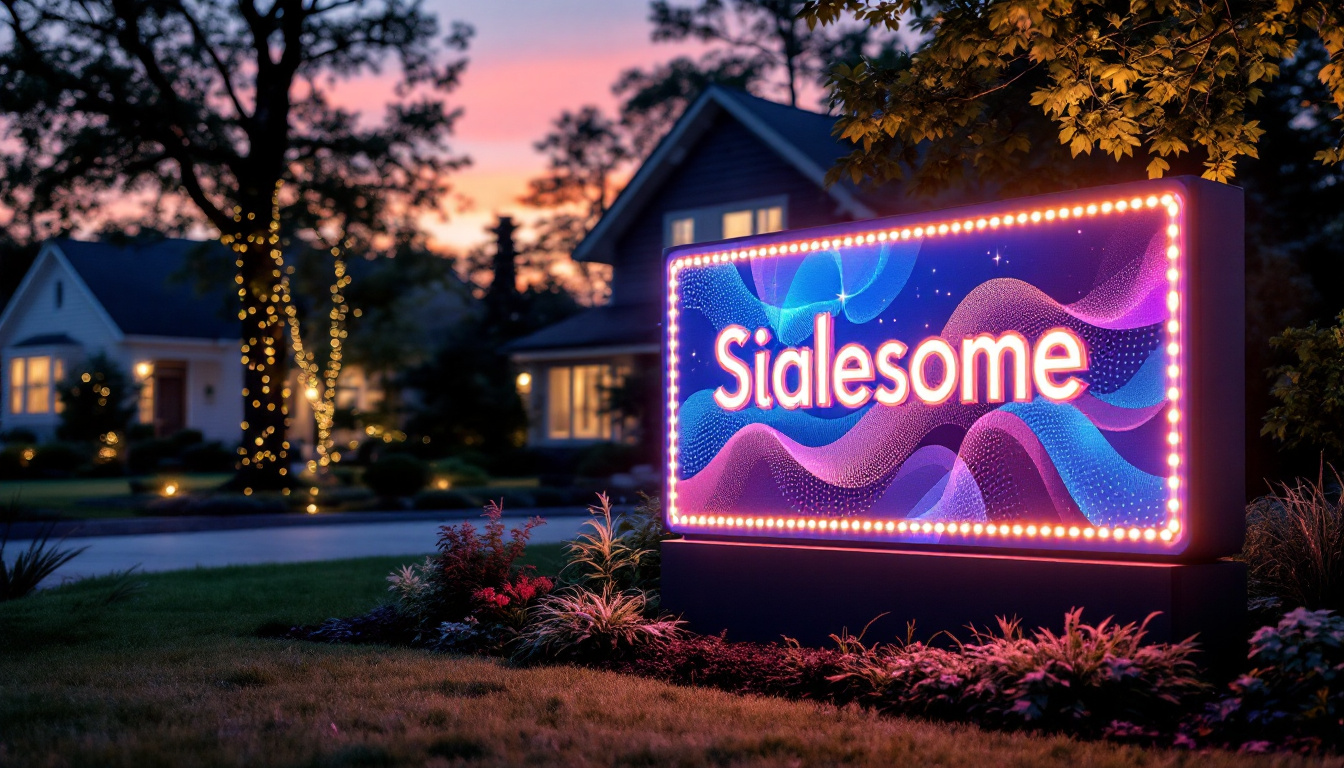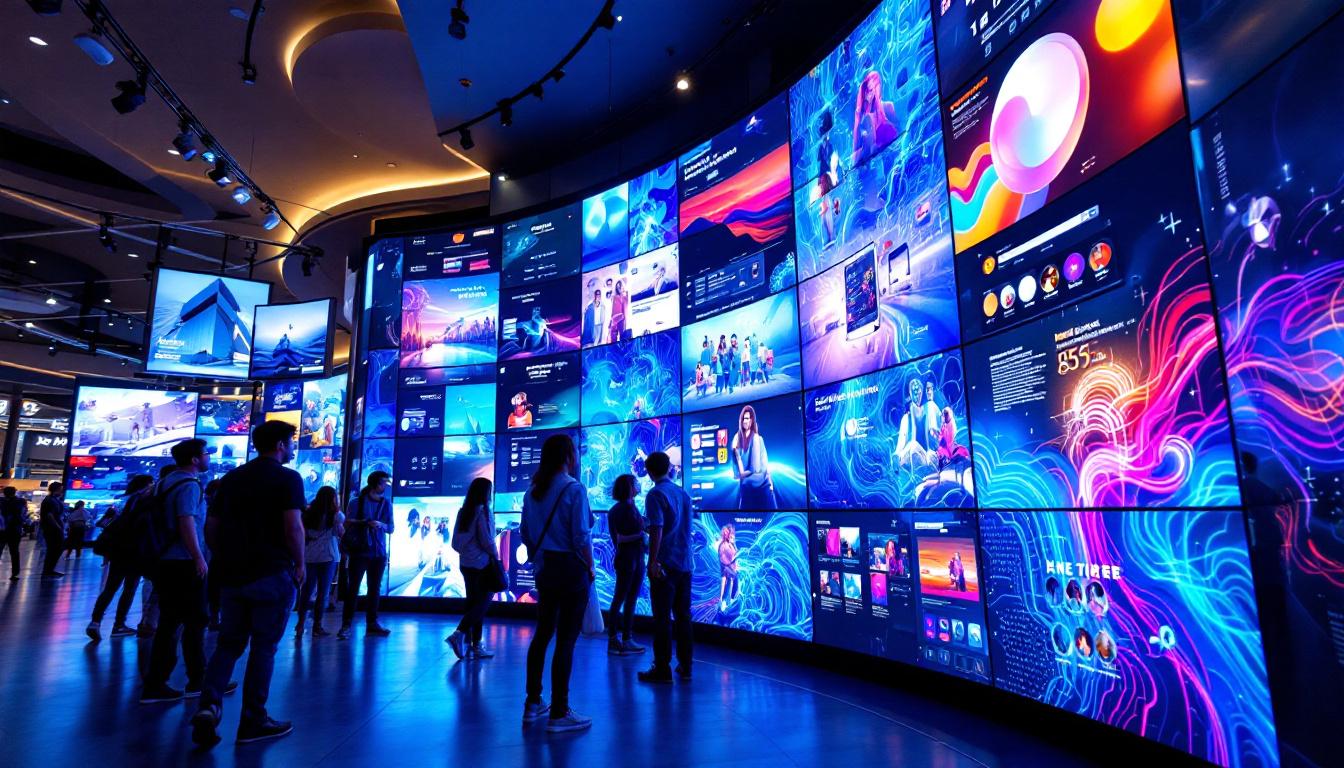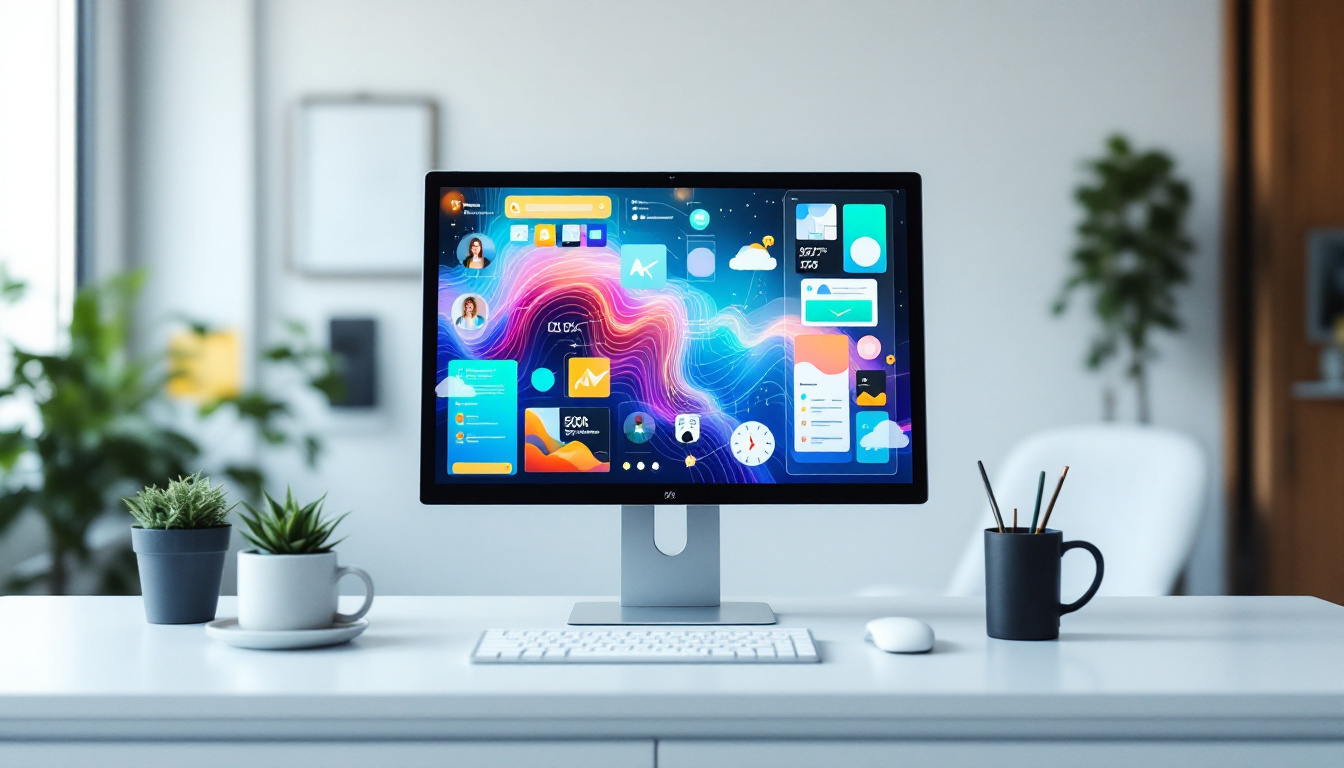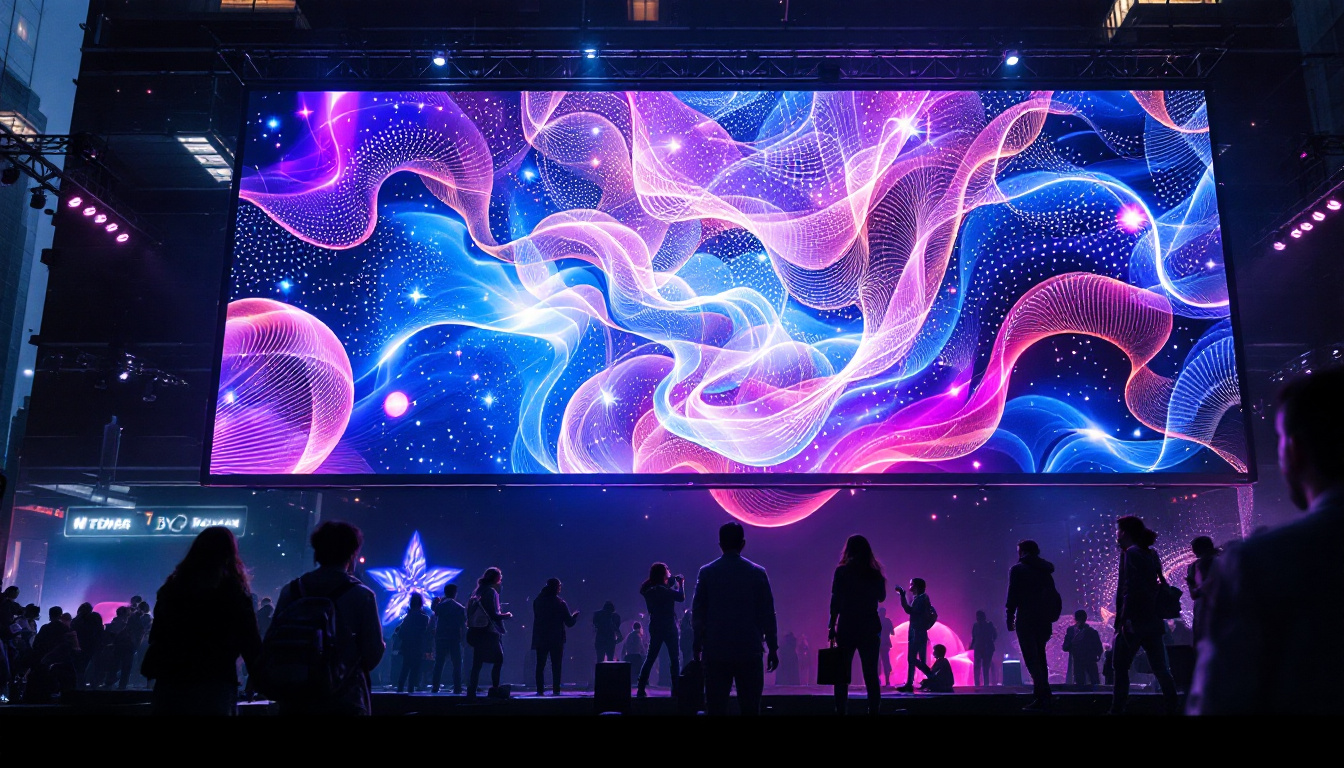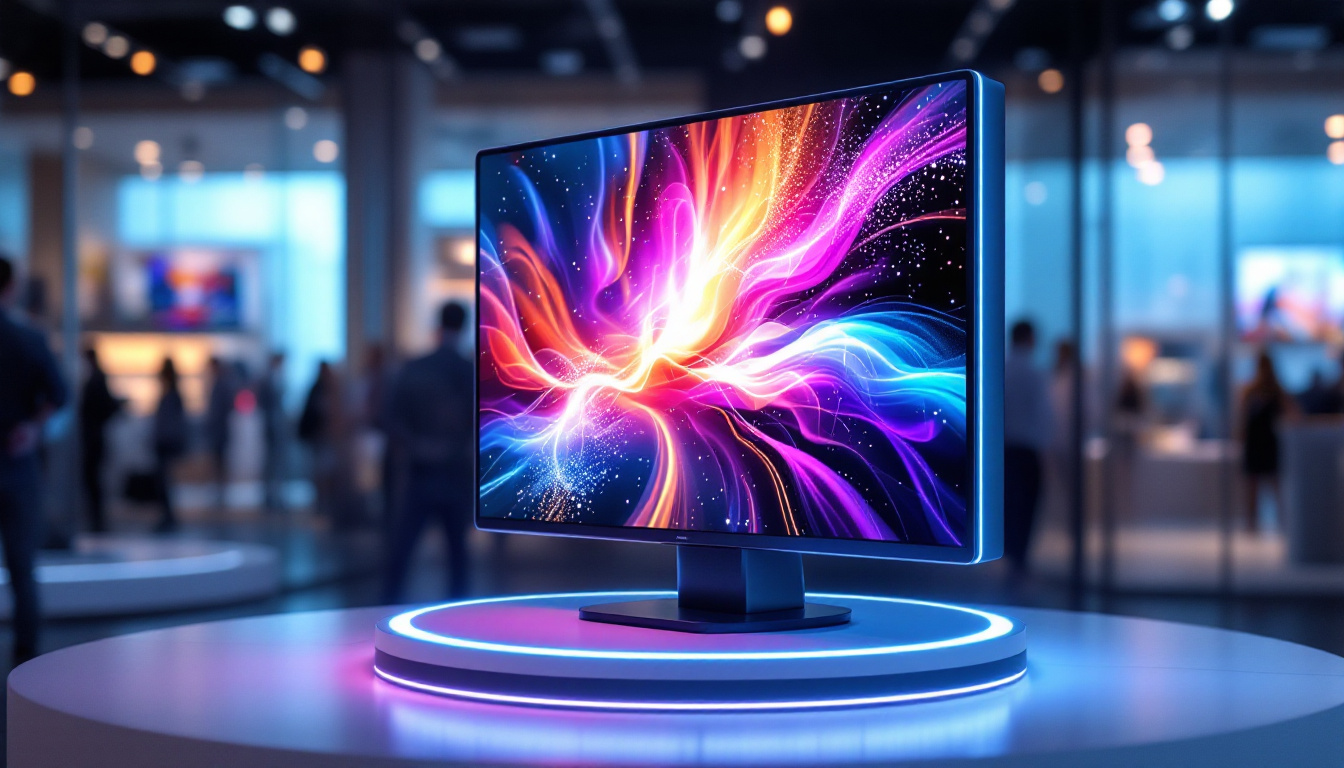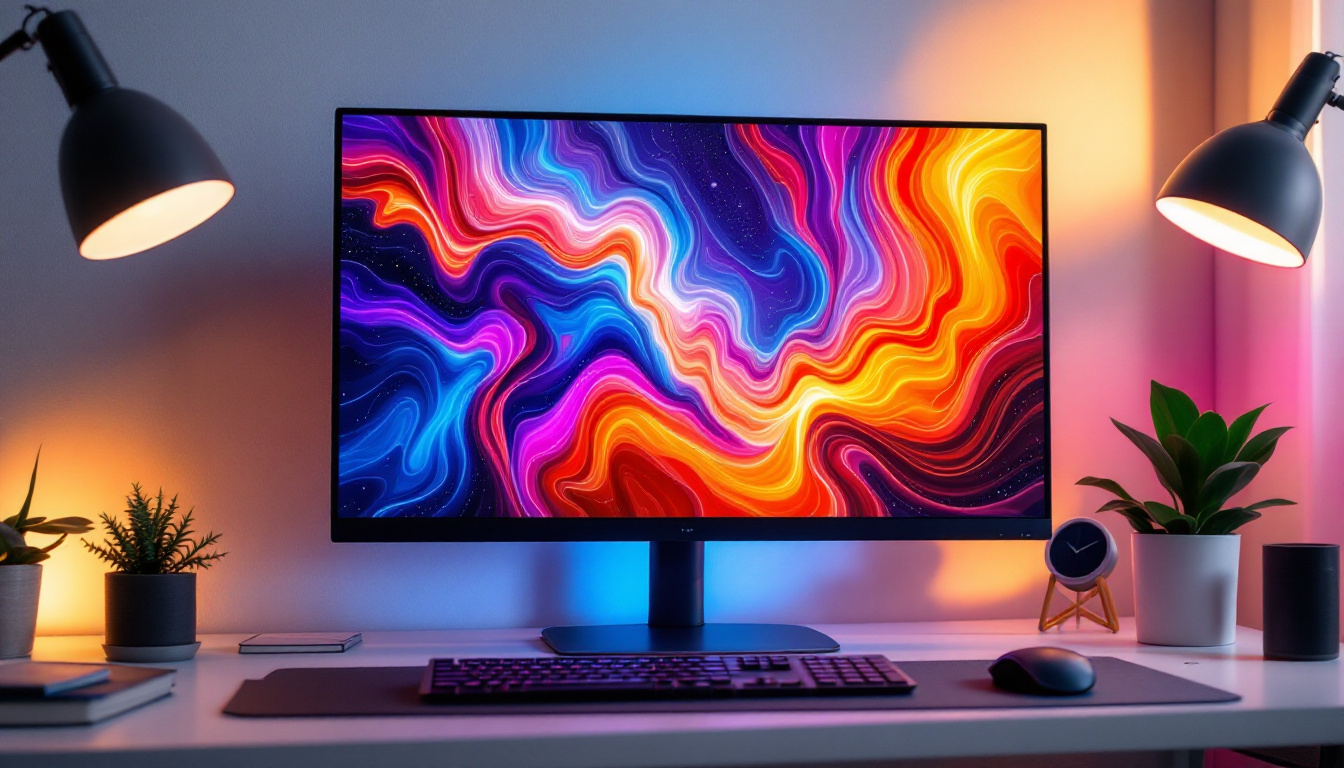In today’s fast-paced digital world, the demand for versatile and efficient display solutions continues to grow. Portable monitors with touch screen capabilities have become increasingly popular among professionals, gamers, students, and creatives alike. These devices combine mobility with functionality, offering a second screen experience on the go. Central to their performance is the LED display technology that powers their vibrant visuals and responsive touch features.
This article delves into the intricacies of portable monitor touch screens, focusing on LED display technology. It explores how these displays work, their advantages, and what to consider when choosing a portable touch screen monitor. Whether you’re a remote worker seeking enhanced productivity or a content creator needing a reliable secondary display, understanding the technology behind these monitors will help you make an informed decision.
Understanding Portable Touch Screen Monitors
What Is a Portable Touch Screen Monitor?
A portable touch screen monitor is a lightweight, compact display device designed to be easily transported and connected to various devices such as laptops, smartphones, gaming consoles, or tablets. Unlike traditional monitors, these devices often incorporate touch-sensitive screens, allowing users to interact directly with the display using fingers or a stylus.
Typically ranging from 10 to 17 inches in size, portable touch monitors offer a balance between screen real estate and portability. They are ideal for multitasking, presentations, drawing, gaming, and even mobile entertainment. The integration of touch technology enhances user interaction, making them suitable for creative professionals and casual users alike.
Key Features of Portable Touch Screen Monitors
Several features distinguish portable touch screen monitors from standard external displays:
- Touch Sensitivity: Capacitive or resistive touch panels enable intuitive control, similar to smartphones and tablets.
- LED Backlighting: LED technology ensures bright, energy-efficient displays with vibrant colors.
- Connectivity Options: USB-C, HDMI, and sometimes wireless connections facilitate easy pairing with multiple devices.
- Lightweight and Slim Design: Designed for portability, these monitors are often less than a pound and slim enough to fit in backpacks.
- Built-in Stands or Cases: Many models include protective cases that double as stands, enhancing usability on the go.
LED Display Technology in Portable Touch Screens
What Is an LED Display?
LED stands for Light Emitting Diode, a semiconductor device that emits light when an electric current passes through it. In the context of displays, LED technology refers to the use of light-emitting diodes as a backlight source for LCD (Liquid Crystal Display) panels. This combination produces bright, sharp images with excellent color accuracy and contrast.
Unlike older CCFL (Cold Cathode Fluorescent Lamp) backlighting, LED backlights consume less power, generate less heat, and allow for thinner display designs. This makes them particularly suitable for portable devices where battery life and weight are critical considerations.
Types of LED Displays in Portable Monitors
There are several LED display types used in portable monitors, each with unique characteristics:
- Edge-Lit LED: LEDs are placed along the edges of the screen, and light is distributed evenly across the display using light guides. This design enables ultra-thin monitors but may have less uniform brightness.
- Direct-Lit LED: LEDs are positioned directly behind the LCD panel, providing more even brightness and better contrast but often resulting in a thicker display.
- Mini-LED: A newer technology featuring thousands of tiny LEDs behind the panel, offering superior contrast ratios and local dimming capabilities, approaching OLED performance.
- OLED (Organic LED): While not strictly LED, OLED displays use organic compounds that emit light individually, eliminating the need for backlighting. OLEDs offer exceptional color accuracy and contrast but are less common in portable monitors due to cost and durability concerns.
How LED Technology Enhances Touch Screen Performance
LED backlighting complements touch screen technology by providing a bright and clear image, which is essential for accurate touch detection. High brightness levels improve visibility in various lighting conditions, including outdoor or brightly lit environments. Furthermore, LED displays typically have faster response times compared to older technologies, reducing input lag and enhancing the overall touch experience.
Additionally, LED displays consume less power, which extends battery life in portable monitors. This efficiency is crucial for users who rely on their monitors during travel or in locations without easy access to power sources.
Benefits of Using Portable Touch Screen LED Monitors
Enhanced Productivity and Multitasking
Portable touch screen monitors serve as excellent productivity tools. They allow users to extend their desktop workspace, enabling multitasking with multiple applications visible simultaneously. For remote workers and digital nomads, this means improved workflow without being tethered to a stationary setup.
The touch screen functionality adds another layer of interactivity, making tasks like annotating documents, navigating software interfaces, or sketching ideas more intuitive. For professionals in design, architecture, and education, this hands-on interaction can significantly improve efficiency and creativity.
Versatility Across Devices and Use Cases
One of the primary advantages of portable LED touch monitors is their compatibility with a wide range of devices. Most models support USB-C connections, which carry video, power, and data signals simultaneously. This single-cable solution simplifies setup and reduces clutter.
Whether connected to a laptop for work presentations, a smartphone for gaming, or a camera for on-location photo editing, these monitors adapt seamlessly. Some even support daisy-chaining multiple displays, further expanding workspace possibilities.
Improved Visual Quality and User Experience
LED displays offer vibrant colors, sharp contrasts, and wide viewing angles, which contribute to a superior visual experience. This is particularly important for creative professionals who require color accuracy for photo and video editing.
Moreover, the touch screen interface enhances user engagement by allowing direct manipulation of on-screen content. This natural interaction reduces reliance on peripheral devices like a mouse or keyboard, making the monitor more accessible and user-friendly.
Considerations When Choosing a Portable Touch Screen LED Monitor
Display Size and Resolution
Choosing the right screen size depends on your usage scenario. Smaller monitors (10-13 inches) are highly portable but may limit workspace, while larger models (15-17 inches) provide more screen real estate at the cost of added weight and bulk.
Resolution is equally important. Full HD (1920×1080) is the standard for most portable monitors, offering clear and detailed images. Higher resolutions like 4K are available but may drain battery faster and require more powerful hardware to drive effectively.
Touch Technology Type
Most portable touch monitors use capacitive touch technology, which supports multi-touch gestures and provides a smooth, responsive experience. Resistive touchscreens, while less common today, may still be found in budget models but generally offer lower sensitivity and fewer touch points.
Consider the type of touch input you need. For drawing or handwriting, a monitor that supports stylus input with pressure sensitivity can be invaluable. Some models come with active pens or support third-party styluses, enhancing precision for creative work.
Connectivity and Compatibility
USB-C has become the preferred connection standard due to its versatility. When selecting a portable monitor, ensure it supports USB-C with DisplayPort Alternate Mode for video transmission. Some monitors also include HDMI ports for compatibility with older devices.
Power delivery through USB-C is another factor to consider. Monitors that can be powered directly from a laptop or smartphone reduce the need for additional chargers, improving portability.
Brightness and Color Accuracy
Brightness levels of at least 300 nits are recommended for comfortable viewing in various lighting conditions. Higher brightness is especially important if you plan to use the monitor outdoors or in brightly lit environments.
Color accuracy is critical for professionals working with visual content. Look for monitors that cover a wide color gamut (sRGB 100% or higher) and offer factory calibration or calibration tools to ensure consistent color reproduction.
Build Quality and Portability
Since portability is a key feature, the monitor’s weight, thickness, and build materials matter. Aluminum or magnesium alloy casings provide durability without excessive weight. Additionally, a protective case or foldable stand can enhance usability and safeguard the screen during transport.
Popular Use Cases for Portable Touch Screen LED Monitors
Remote Work and Mobile Productivity
With remote work becoming the norm, portable touch screen monitors offer a flexible solution for expanding workspace anywhere. They enable professionals to maintain productivity in coffee shops, co-working spaces, or while traveling.
Touch capabilities facilitate quick navigation through documents and presentations, making meetings and collaboration more dynamic. The ability to annotate directly on the screen is particularly useful during brainstorming sessions or client reviews.
Creative Professionals and Digital Artists
Artists, designers, and photographers benefit greatly from portable touch screen monitors with LED displays. These monitors provide accurate color reproduction and responsive touch input, essential for detailed work such as photo retouching, digital painting, and graphic design.
Models supporting stylus input with pressure sensitivity allow for natural drawing experiences, rivaling dedicated drawing tablets. The portability of these monitors means creatives can work on projects anywhere without sacrificing quality.
Gaming and Entertainment
Gamers appreciate portable touch screen monitors for their ability to extend gaming setups beyond the desktop. These monitors can connect to consoles or gaming laptops, providing additional screen space for maps, chats, or streaming controls.
LED displays with high refresh rates and low response times enhance gaming visuals and reduce input lag, improving gameplay experience. Touch functionality can also add new control possibilities for compatible games.
Education and Presentations
In educational settings, portable touch screen monitors facilitate interactive learning. Teachers can use them for digital whiteboarding, annotating slides, or engaging students with touch-based activities.
For business presentations, these monitors offer a sleek and portable alternative to projectors, allowing presenters to interact directly with their content and adapt quickly to different venues.
Future Trends in Portable Touch Screen LED Displays
Advancements in Display Technology
The future of portable monitors is promising, with innovations like Mini-LED and MicroLED displays gaining traction. These technologies promise better contrast ratios, higher brightness, and improved energy efficiency, enhancing both image quality and battery life.
Flexible and foldable LED displays are also on the horizon, potentially transforming portability by allowing screens to bend or roll, making them even easier to carry.
Improved Touch and Pen Input
Touch technology continues to evolve, with developments in haptic feedback and stylus precision. Future portable monitors may offer tactile responses to touch inputs, simulating textures and button presses for a more immersive experience.
Enhanced pen input with higher pressure sensitivity and tilt recognition will further benefit artists and designers, bringing portable monitors closer to professional-grade drawing tablets.
Integration with AI and Smart Features
Artificial intelligence could play a role in optimizing display settings based on ambient lighting, user preferences, or content type. Smart features might include voice control, gesture recognition, and seamless integration with cloud services, making portable monitors more intuitive and versatile.
Conclusion
Portable touch screen monitors with LED displays represent a convergence of mobility, interactivity, and visual excellence. Their ability to deliver vibrant, responsive touch interfaces in a compact form factor makes them invaluable tools across various professional and personal applications.
Understanding the underlying LED technology and key features helps users select the right monitor tailored to their needs. As display technologies continue to advance, these portable devices will only become more powerful, efficient, and integral to modern digital workflows.
Whether enhancing productivity on the road, unleashing creativity, or elevating entertainment experiences, portable touch screen LED monitors are shaping the future of mobile computing and digital interaction.
Discover LumenMatrix’s Advanced LED Display Solutions
As you consider the future of portable touch screen LED monitors and their impact on your digital lifestyle, LumenMatrix invites you to explore our innovative LED display solutions. With a commitment to revolutionizing visual communication, our range of products, from Indoor and Outdoor LED Wall Displays to Custom and All-in-One LED Displays, is designed to captivate audiences and elevate your brand’s message. Experience the pinnacle of LED technology and enhance your visual experiences by visiting LumenMatrix LED Display Solutions.





